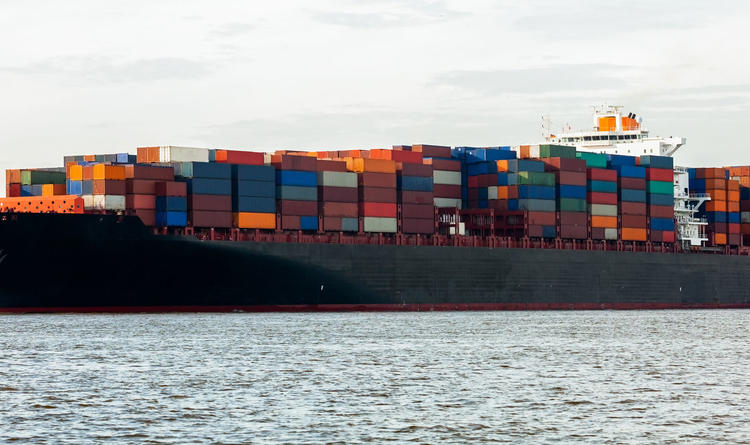
Overseas shipping|Basic knowledge of shipping-dry bulk carrier
overseas shipping
Bulk carrier refers to the general term for ships that carry bulk dry bulk cargoes such as grains, coal, ore, salt, cement, etc. It is also customarily called dry bulk carrier or bulk carrier. Because the bulk carrier has a single type of cargo, it does not need to be packed into bundles, bags, and boxes for loading and transportation. The cargo is not afraid of squeezing and is easy to load and unload, so they are all single-deck ships.Handysize bulk carrier: It is a bulk carrier equipped with cranes and loading and unloading equipment with a carrying capacity of more than 10,000 tons and less than 40,000 tons. Because it is equipped with loading and unloading equipment, at the same time, the load is small and the draft is relatively shallow. Therefore, it can adapt to ports with shallow water depth and poor conditions. The operation is convenient and flexible, and the adaptability is strong, so it is called the handy type. The freight index tracked by Handycraft is the BHSI index, also called the Baltic Handysize Bulk Carrier Freight Index.
Handymax bulk carrier, also known as Handymax bulk carrier: This type of ship is 40,000 to 59 thousand tons, and its draft is generally about 11 meters. It meets the needs of most large ports for entry and exit with full load, generally 5 cabins and 5 ports. Cargo cargo is mainly grain, coal and coke. Handy and Handy, although they are of different sizes, they are generally equipped with booms, which can be self-loaded and self-unloaded, and can be used for small-batch cargo transportation between ports with relatively poor port conditions. The freight index tracked by Handysize ships is the BSI index, also called the Baltic Handysize bulk carrier freight index.
Panamax bulk carrier: As the name implies, this type of ship refers to the largest bulk carrier that can pass through the Panama Canal under full load, that is, it mainly meets the requirement that the total length of the ship does not exceed 274.32 meters and the model width does not exceed 32.30 meters. Relevant regulations on navigation of the canal. According to needs, adjust the ship's size, ship type and structure to change the load capacity. The load capacity of this type of ship is generally between 60 and 75,000 tons. The freight index tracked by Panamax is the BPI index, also called the Baltic Panamax freight index.
Cape bulk carrier: refers to a bulk carrier with a carrying capacity of about 150,000 tons. This type of ship mainly transports iron ore. It is impossible to pass through the Panama Canal and the Suez Canal due to size restrictions. It needs to detour around the Cape of Good Hope and Hehe. En Cape, Taiwan Province calls it a "cape" type. Since the Suez Canal authorities have relaxed the draught restrictions for ships passing through the canal in recent years, most of this type of ship can pass through the canal with full load. The freight index tracked by Capesize ships is the BCI index, also called the Baltic Capesize bulk carrier freight index.
Very Large Ore Carrier (VLOC): refers to a very large ship with a load capacity of more than 200,000 tons (up to 400,000 tons) and is only used for long-distance transportation of coal and iron ore. Coal mainly serves North America, Australia, and Far East routes. Iron ore is mainly transported from South America, Australia to Japan, China and the Far East, the Mediterranean and Europe. Due to the trend of double-hulled tankers, many vlcc (Very Large Crude Oil Carrier) have been transformed into VLOCs to transport iron ore.
The Baltic Index (BDI Index) is an index that reflects the price of dry bulk freight. It is calculated by weighting the spot freight rates of several major routes, reflecting the spot market conditions. The Baltic Dry Bulk Index (BDI) consists of three parts, with weights as follows: Baltic Handy Index (BSI) 30%; Baltic Panama Panama Index (BPI) 30%; Baltic Capes Index (BCI) 40%.
Features of dry bulk carrier:
1. The cargo hold is a single deck with large hatches;
2. It is a single-layer or double-layer hull structure;
3. The hatch coaming is tall and the cross section of the cargo hold is prismatic, which can fill the cargo hold, reduce trimming work, facilitate unloading, and prevent cargo movement and endanger the stability of the ship;
4. The triangular tanks (upper and lower side tanks) at the four corners of the cargo hold are ballast tanks, which are used to adjust the draught and stability height;
5. The ship is large and generally one-way transportation.
6. When a bulk carrier is empty, usually 1 to 2 cargo tanks are used as ballast tanks.
7. The bulk carrier has large deadweight, large tonnage and good economy.
8. Generally, special loading and unloading machinery and special docks are used.
9. Generally low-speed ships.
Main routes of dry bulk carriers:
Due to the different cargoes carried, different ships have their own specific routes. The following are the main routes of bulk cargo:
1. Iron ore: Australia to Far East and Europe; India to Far East; South Africa to Far East and Europe; Brazil to Far East, Europe and Argentina; Chile to Far East; Norway to Europe; Black Sea to Far East
2. Coal: Australia to the Far East and Europe; Australia/India to South Africa; Indonesia to the Far East and Europe; South Africa to the Far East and Europe; Colombia to Europe; the East Coast of the UAE to the Far East and Europe; the West Coast of Canada to the Far East
3. Wheat: North America to the Far East, the Middle East and Europe; Australia to the Far East and the Middle East; the East Coast of South America to the Far East and Europe; the United Kingdom/Continent Europe to the Middle East and North America; the Black Sea to the Middle East
4. Soybean: US Gulf/Mississippi River to Far East, Middle East and Europe; Brazil to Far East and Europe; Argentina to Far East and Europe








Leave a comment